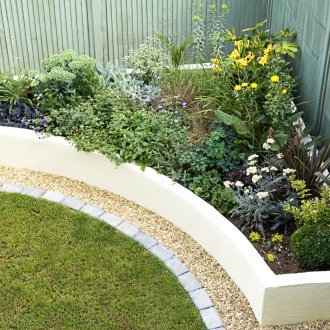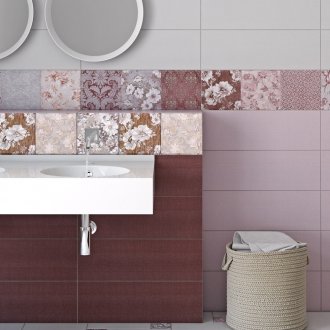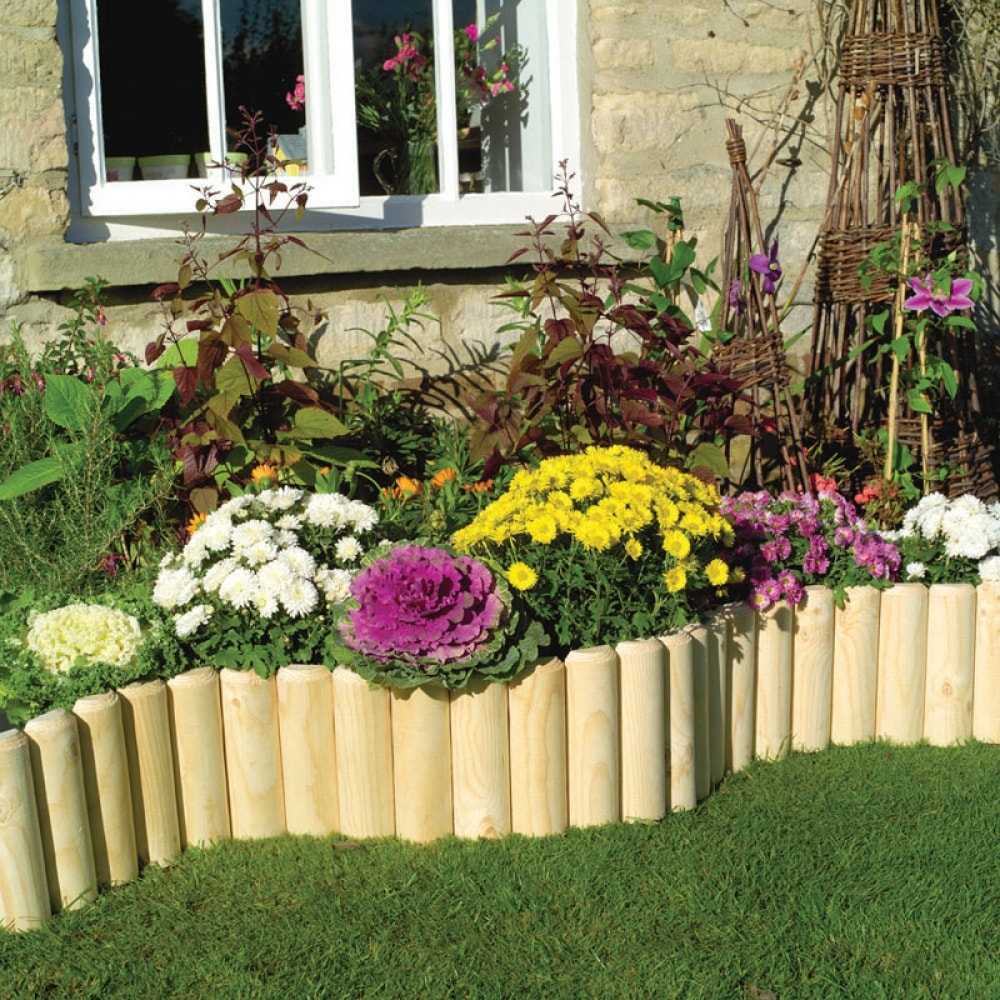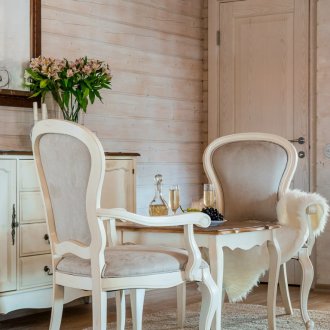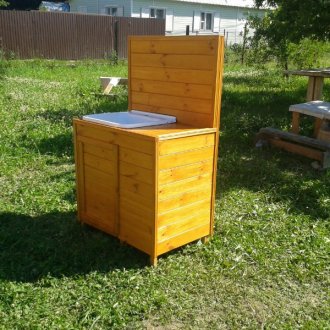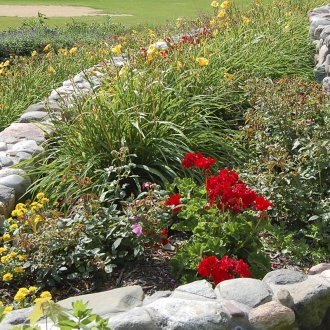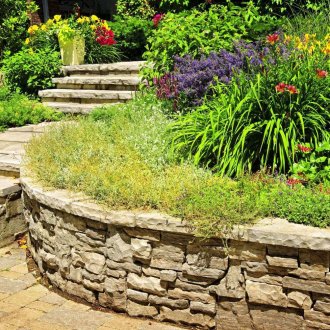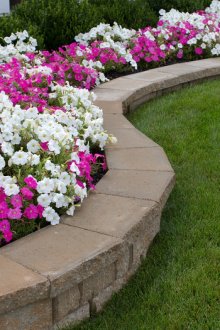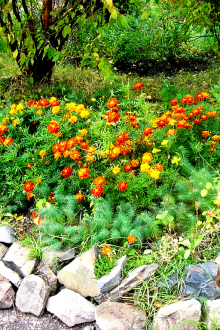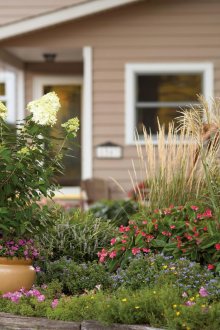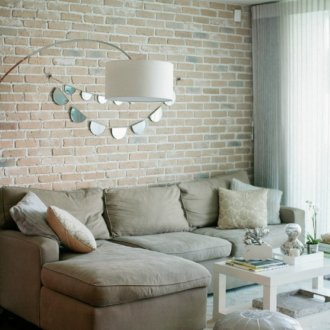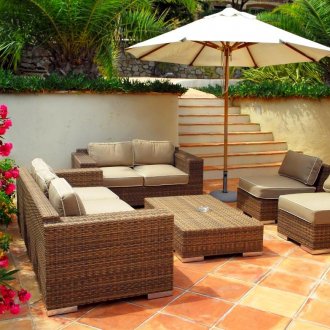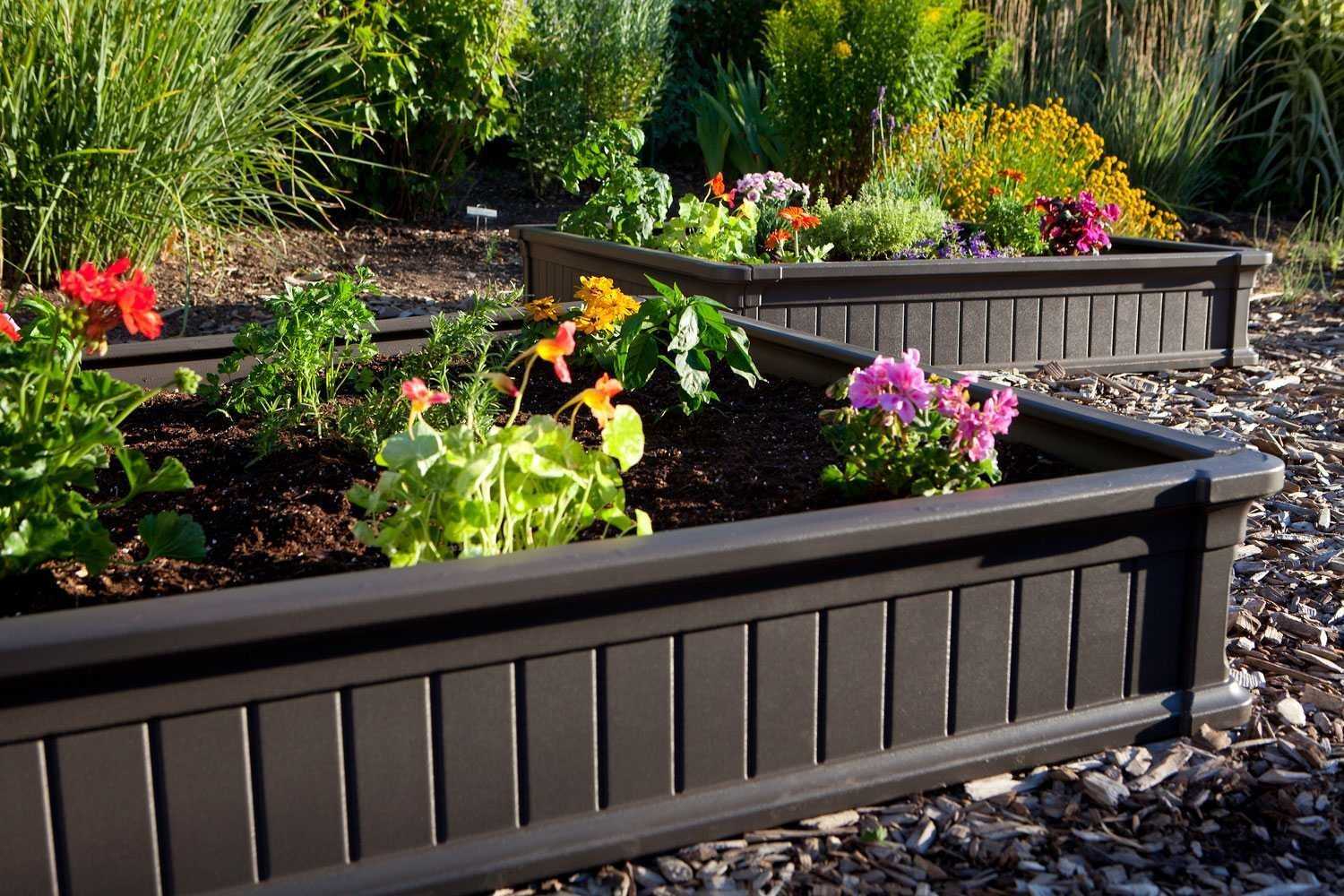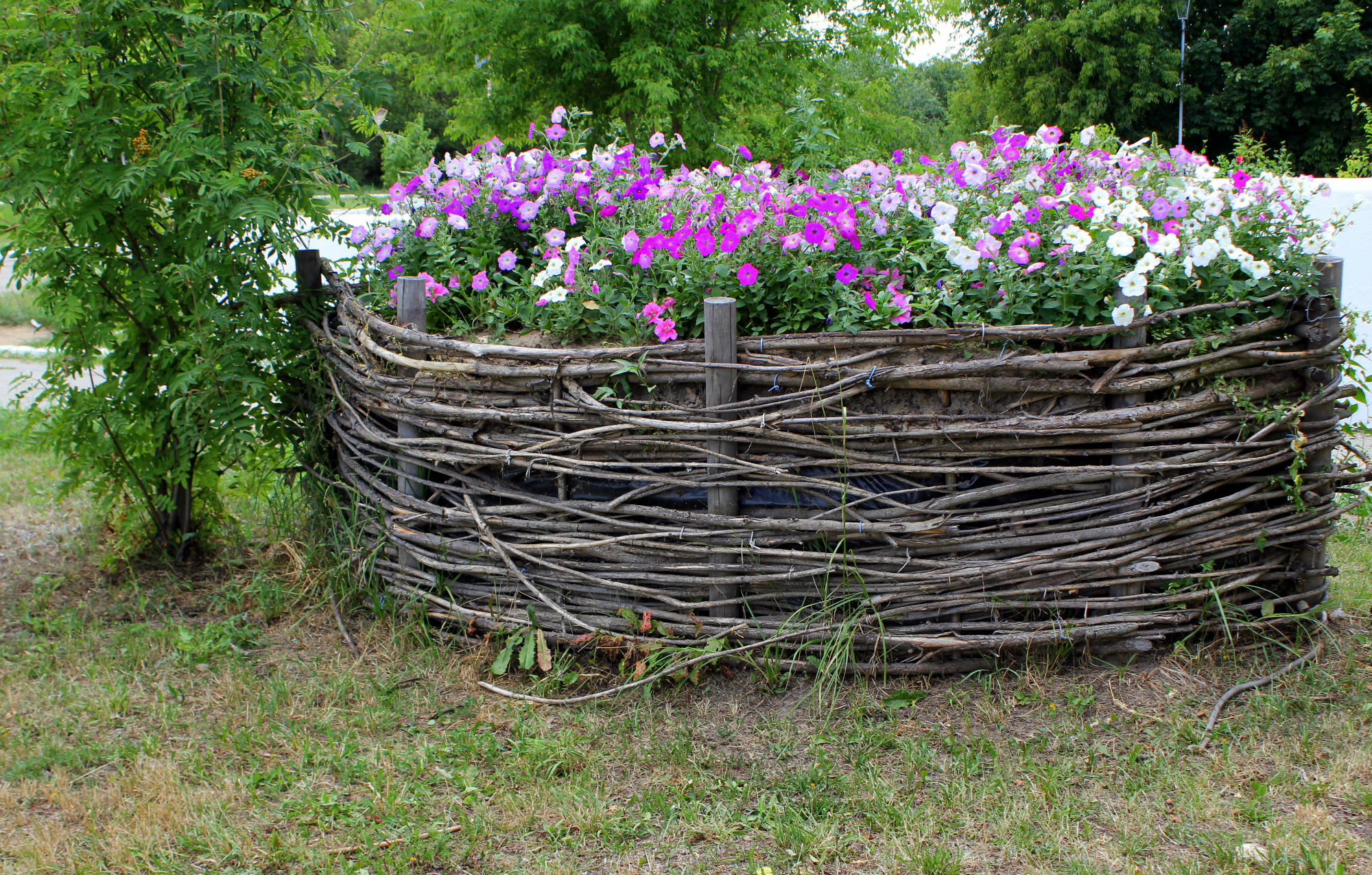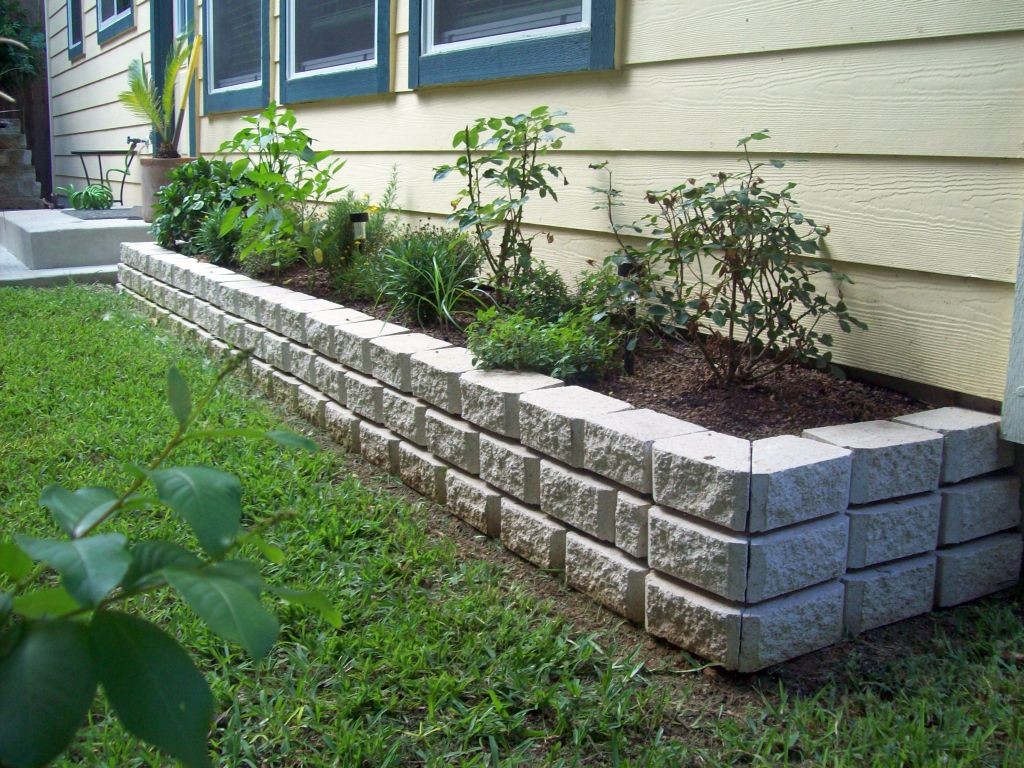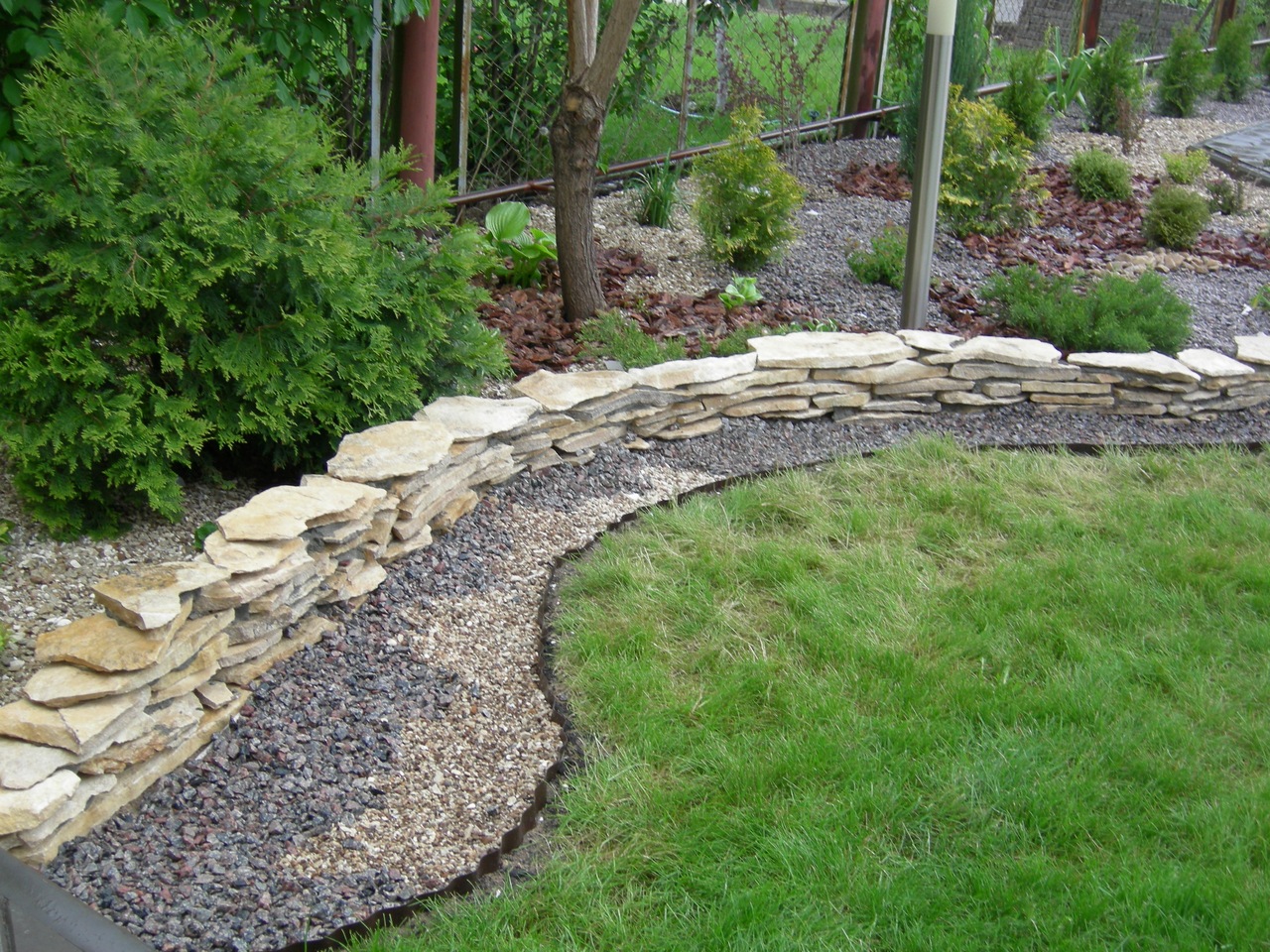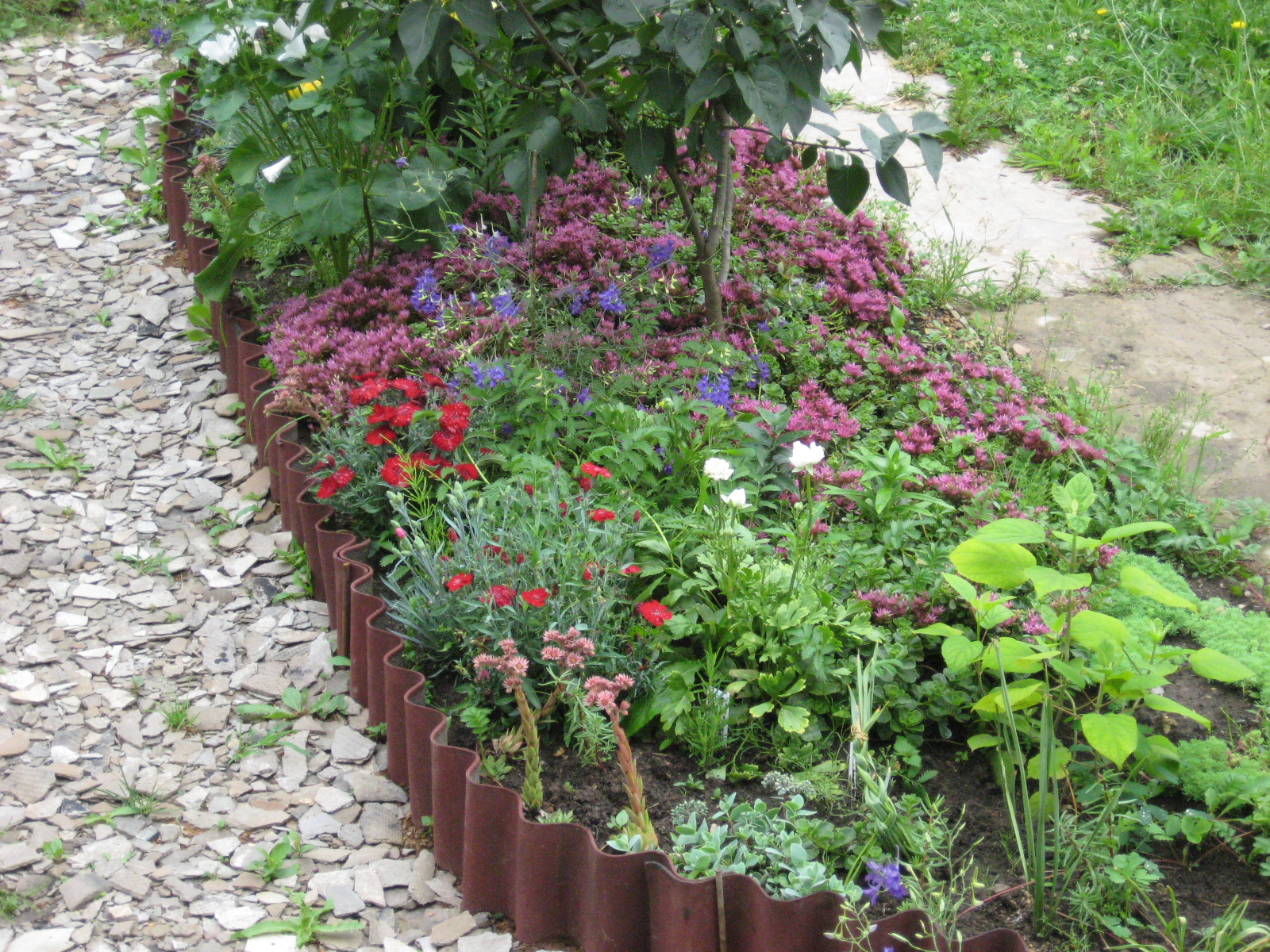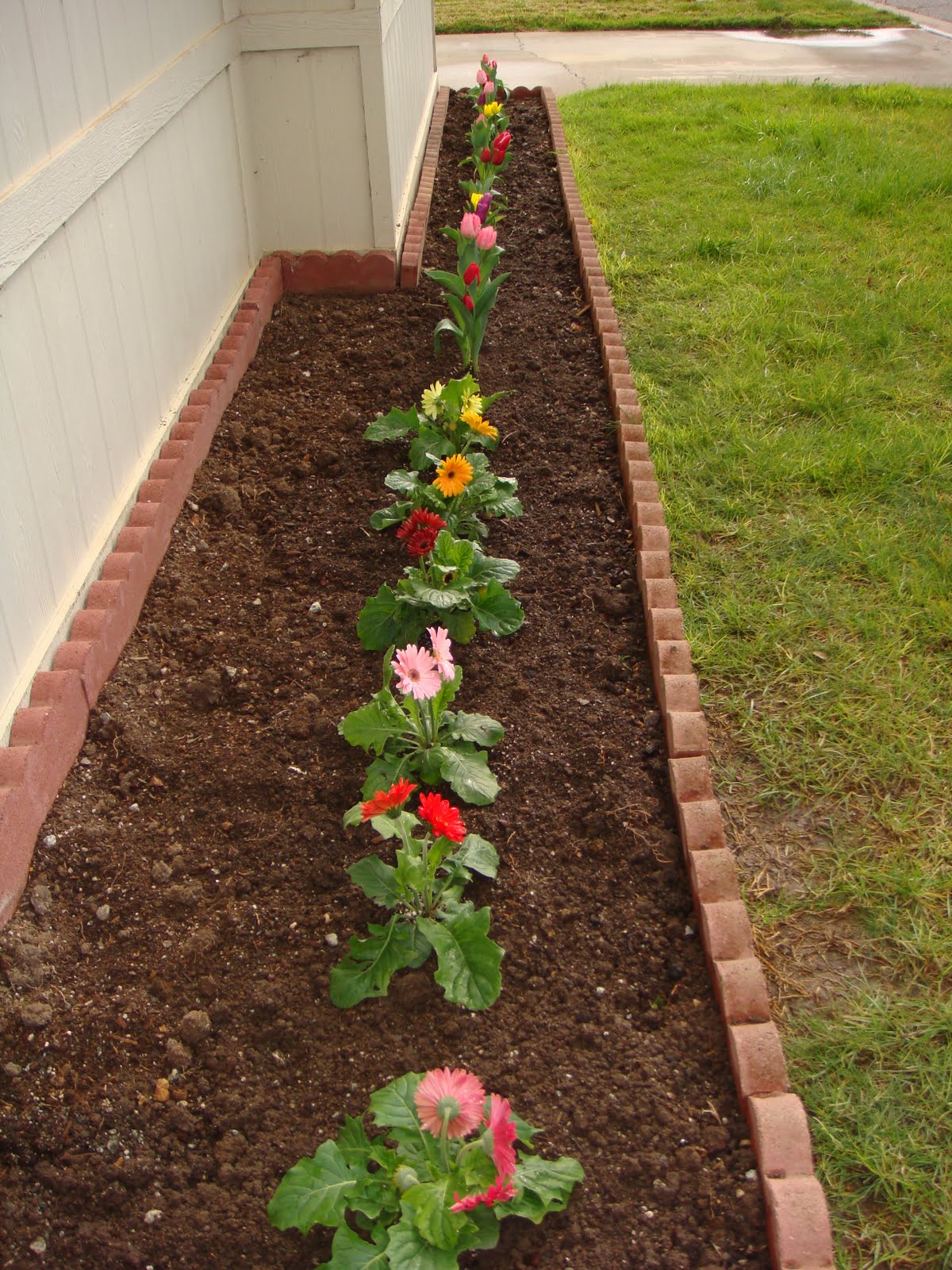Protections for beds: universal options (21 photos)
Content
Flower gardens often play a leading role in creating landscape design. Sometimes a small flower garden is enough to give the site mood and bright colors. Moreover, fencing, which can be compared with a frame for an art picture, is important in creating a non-standard, memorable flower garden.
A border is a fence separating a bed from a path or a decorative fence for a flower bed.
Functional purpose of garden fences:
- decorative - give the flowerbed a finished and well-groomed appearance. A border built of textured material combined with the exterior of the house gives the site a harmonious look;
- protect from unnecessary growth of weaving flower beds;
- the formation of separate sections for various plants (plastic borders for beds). The decorative border maintains order and allows you not to get confused with the places of planting flowers;
- helps to form multi-stage terraces for tall flower beds so that water does not flow down;
- interferes with the leaching of soil from the flowerbed / beds on the track in rainy times. It is an obstacle for sand or pebbles from the path to get into the flowerbed / bed;
- visual warning for young children and animals not to enter the enclosed area.
Thanks to modern technologies, boring designers and lazy summer residents / homeowners, both traditional and creative / unusual materials are used to fence flowerbeds.
Materials for borders
To create fences, you can use ready-made plastic elements sold in stores and on construction markets. A great idea is to independently recreate a non-standard decorative fence for flower beds of any shape or height. Moreover, what material (natural or plastic) to use, the owner of the site determines personally.
Types of wooden fences, their advantages and disadvantages
Fences made of natural wood look great on sites. It is quite simple to make wooden borders for flower beds with your own hands.
Fences wicker from a vine or reed will give the garden an openwork mood. To equip the structure, pegs of the same length are driven into the ground at the same distance from each other (determined by the approximate length of the rods). Alternately braiding the pegs with twigs, do-it-yourself wall fencing for flower beds is created. From the small round wattle fence you can make borders in the form of baskets of different diameters, and it will be interesting to arrange square / rectangular structures on the same line as flower stands.
Advantages of wattle: environmentally friendly natural material is used, the shape of the flowerbed or the length of the fence can be very diverse, the material is free. Disadvantages: short service life (untreated wood will quickly dry out, lose shape).
A decorative border for flower beds in the form of a stockade is constructed from logs from 15 cm to 50 cm long.The height of the workpieces depends on the diameter of the tree (the thinner the tree, the shorter the log), the parameters of the plot (looks harmonious if a large area is fenced with thick logs). It is desirable to pre-clean the tree from the bark and treat it with appropriate protective primers. Thin blanks are sharpened on one side and driven into the ground with a wooden mallet. Thick logs are dug into the ground, and the depth of instillation is determined individually.
It is good to make out country paths, flower beds near open areas with such a border. It is recommended that the logs be coated with colorless varnish, rather than paint, to preserve the natural beauty of the wooden texture.
Advantages: the ability to create smooth, stepped lines of fencing for flower beds with your own hands (if you dig logs at different depths), environmental friendliness of the material, inexpensive cost, work does not require special skills and special tools. The disadvantage is that the wooden fence does not quickly understand, so it is recommended to carefully plan the placement of flower beds and paths on the site.
The naturalness of wooden barriers pleases the eye, allows you to fully enjoy the bewitching pattern of wood texture.
Iron fences
Metal fencing for flower beds, of course, look original and stylish, in urban style.
Forged and welded products are created from metal. Forged items give the sites sophistication and weightlessness. Since it is possible to make a fence by order, then a drawing / ornament of any style is selected. If the house already has forged elements (fencing balconies, bars on the windows), then it will be a great idea to repeat their pattern on the fences for flower beds. This will create a single harmonious mood throughout the site.
Custom forging is quite expensive, so you can install welded fencing for flower beds and beds - a very budget option.
Advantages: durability, do not suffer from the effects of atmospheric precipitation, simple installation, no foundation for installation is required. Disadvantages: high price forged products.
Decorative concrete borders
Concrete fences for flower beds are finished products. When choosing a suitable model, you only need to decide on the type, shape, size. Construction and summer houses offer separate fences of various geometric shapes, which are installed directly on the ground (first you need to make a small indentation in the ground in the shape of a curb). Garden fences with a bottom (in the form of bowls) are placed on a concrete base / mortar.
Advantages: special care is not required, tolerance of temperature / humidity changes, durable. Disadvantages: “sad” appearance. To make the product attractive, it must be additionally decorated, at least painted with paint.
Plastic dividing borders
This is a very popular and budget option for the refinement of country and garden plots. Plastic protections for beds amaze with a variety of shades, forms, styles. For the arrangement of borders are offered:
- flexible border tape, which performs the delimiting function of the fence for beds and flower beds rather than decorative. It is sold in rolls of different lengths, from 10 cm to 30 cm wide. The surface is smooth or wavy. The strip is dug into the soil to the desired depth;
- ready-made sectional fence fences for flower beds are very diverse in color and decor. At the edges of each section there are special legs that are pressed into the ground for fixation.
Advantages: low price, maintenance-free, many manufacturers, a wide range of plastic borders, easy to install / remove. Disadvantage: short service life, sensitivity to temperature fluctuations, fragility of enclosing sectional products.
Brickwork as an interesting decor for flower beds
Although brick is used as the main material in construction, it is also very often used to create a decorative fence for flower beds with your own hands. Moreover, for mini-buildings, you can use both old brick (from collapsed masonry) and new. Old products used to be ennobled by whitewashing. Today, for the decoration of garden borders, they immediately use facing material. Borders for flower beds made of bricks can be laid out “dry” - without fixing mixtures. But it is more practical, more reliable to build a flowerbed on a concrete base and fasten the masonry with cement mortar. If the flower beds are decorated with the same brick as the cladding of the house, then a harmonious composition of the site is created.
Advantages: durability, no maintenance required, many options for decorative masonry and creating borders of various thickness / height, resistance to changes in temperature, humidity, the ability to use both new and old facing / building material. Disadvantages: difficult dismantling (therefore, it is desirable to accurately identify the place where the flower bed will look colorful).
How to make a border for a flower bed with your own hands from stone?
Beautiful stone fences for flowerbeds will decorate any site. If the construction does not use formwork, then the vertical surface will retain the textured "ragged" edge. Since the masonry is fixed with cement mortar and remains for many years, you should carefully choose the location of the flowerbed, its shape, the height of the fence.
Materials for work: any stones (pebbles, sandstone, limestone), polyethylene / ruberoid, rope with pegs, cement mortar.
The working process:
- with the help of ropes and pegs, marking is fixed on the ground;
- preparing a trench for the foundation with a depth of up to 20 cm and a selected width;
- the bottom of the recess is covered with a strip of polyethylene or roofing material;
- cement mortar is poured and left to dry completely;
- the first layer of the curb is made of the largest stones. So that the stones are firmly fixed, in addition to cement, you can pour earth;
- subsequent levels of stones are held together only by cement. Masonry height is selected individually;
- in the lower part of the fence (at ground level), ventilation holes are necessarily formed to drain excess water from the flower beds. In order not to create ugly holes, it is enough to not seal some joints in the masonry with mortar.
The peculiarity of the stone fence is to preserve the naturalness and naturalness, no matter what additional decorations or construction techniques are used.
It does not matter what borders are made of for flower beds and flower beds, because any textures and shapes give the flower beds a unique look, form the uniqueness of landscape design.
